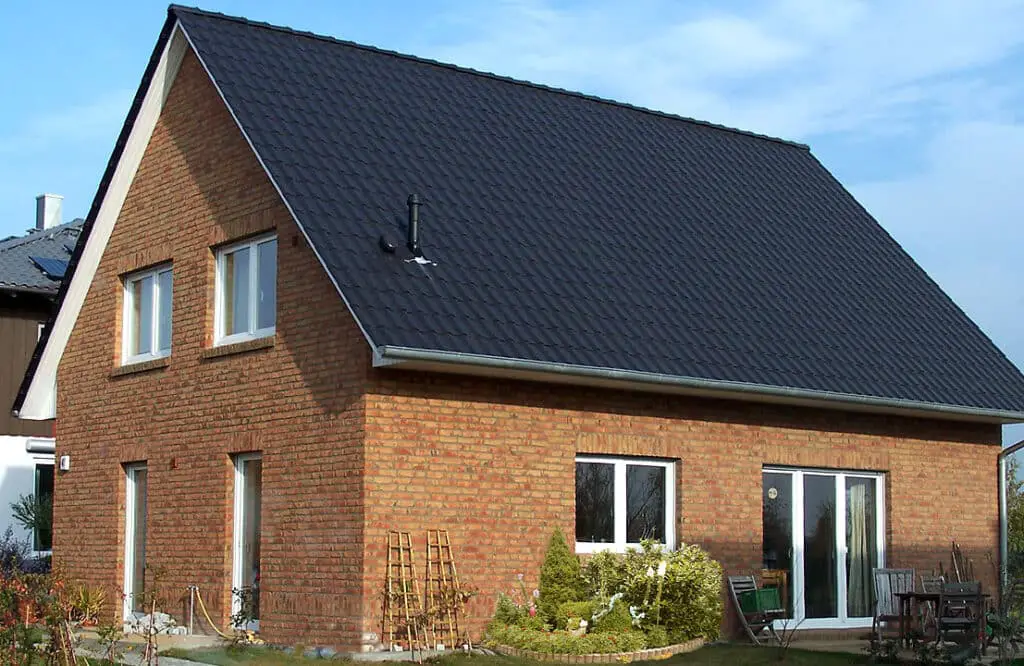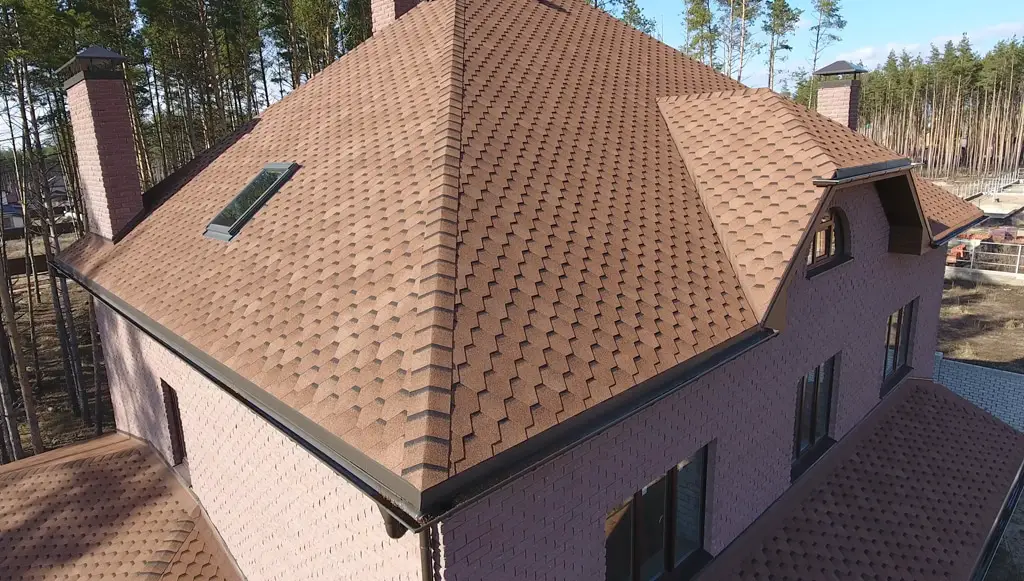How To Attach Foam Board Insulation To Metal Roof
Introduction
How To Attach Foam Board Insulation To Metal Roof: When it comes to insulating a metal roof, foam board insulation is a popular choice due to its excellent thermal properties and ease of installation. Whether you are looking to improve energy efficiency, reduce noise, or prevent condensation, attaching foam board insulation to a metal roof can provide numerous benefits. In this article, we will guide you through the process of attaching foam board insulation to a metal roof, ensuring a successful and effective insulation solution.
Foam board insulation, also known as rigid insulation, is a lightweight and durable material that offers superior thermal resistance.Unlike other insulation materials, foam board insulation does not sag or settle over time, ensuring long-lasting performance. Additionally, it is resistant to moisture, mold, and pests, making it an ideal choice for metal roofs.
Before attaching foam board insulation, it is crucial to prepare the metal roof properly. Start by cleaning the surface to remove any dirt, debris, or rust. Use a wire brush or sandpaper to smooth out any rough areas. Next, ensure that the roof is dry and free from any moisture. This step is essential to prevent the growth of mold or mildew between the insulation and the metal roof. If necessary, apply a primer or sealant to enhance adhesion and protect the metal surface.

How do you get foam board to stick to metal?
The first step is to ensure that the foam board and the metal surface are clean. Any dirt, grease, or grime will interfere with the adhesive and cause it not to adhere correctly. Next, you’ll want to roughen up the metal surface using sandpaper. This will help create a better grip for the glue.
When it comes to sticking foam board to metal surfaces, it is important to choose the right adhesive and follow the correct application process. Foam boards are lightweight and versatile materials commonly used for insulation, signage, and craft projects. However, their smooth surface can make it challenging to achieve a strong bond with metal. In this guide, we will explore some effective methods and tips to help you successfully adhere foam board to metal surfaces.
Method 1: Using adhesive sprays or glues:
One of the most common methods to stick foam board to metal is by using adhesive sprays or glues specifically designed for this purpose. Before applying the adhesive, ensure that both the foam board and metal surface are clean and free from dust or debris. Apply the adhesive evenly on both surfaces, following the manufacturer’s instructions. Then, press the foam board firmly onto the metal surface, applying even pressure to ensure proper adhesion. Allow the adhesive to dry completely before handling or moving the bonded materials.
Method 2: Double-sided tape:
Another effective method to attach foam board to metal is by using double-sided tape. This method is quick, easy, and does not require any drying time. Choose a double-sided tape that is suitable for bonding foam and metal surfaces. Cut the tape into strips or pieces and apply them evenly on the back of the foam board. Peel off the protective backing from the tape and carefully press the foam board onto the metal surface, ensuring proper alignment. Apply firm pressure to ensure a secure bond. Double-sided tape is a convenient option for temporary or lightweight applications.
Method 3: Mechanical fasteners:
In some cases, using mechanical fasteners such as screws, nails, or rivets may be necessary to securely attach foam board to metal surfaces. Pre-drill holes in the foam board and metal surface to prevent the foam from cracking or splitting. Align the foam board with the metal surface and insert the fasteners through the pre-drilled holes. Tighten the fasteners securely, but be cautious not to overtighten and damage the foam board. This method provides a reliable and long-lasting bond between foam board and metal.
By following these methods and tips, you can successfully stick foam board to metal surfaces. Whether you choose adhesive sprays, double-sided tape, or mechanical fasteners, always ensure that the surfaces are clean and properly prepared for bonding. Additionally, consider the specific requirements of your project and select the appropriate method accordingly. With the right adhesive and proper application, you can achieve a strong and durable bond between foam board and metal.
How do you adhere insulation to metal?
Attach Insulation with double sided tape and glue: Run the double sided tape adjacent to a line of glue (super metal sealant) on the bottom of the I-beams. The tape serves as the short-term hold and the glue serves as a longer-term hold.
When it comes to adhering insulation to metal surfaces, there are several effective methods that can be employed. Insulation plays a crucial role in maintaining temperature control, preventing condensation, and reducing energy loss in various applications. Whether you are working on a residential or industrial project, it is essential to choose the right method to ensure a secure and long-lasting bond between the insulation material and the metal surface.
Methods for adhering insulation to metal:
One commonly used method is the application of adhesive. Adhesives specifically designed for insulation purposes are available in the market. These adhesives are formulated to provide excellent bonding strength between the insulation material and the metal surface. They are typically applied using a trowel or a brush, ensuring an even distribution of the adhesive over the metal surface. It is important to follow the manufacturer’s instructions regarding the drying time and curing process to achieve optimal results.
Another method is the use of mechanical fasteners:
In situations where a stronger bond is required or when working with heavier insulation materials, mechanical fasteners can be used. These fasteners, such as screws or nails, are driven through the insulation material and into the metal surface, securing the insulation in place. This method is particularly useful when dealing with insulation materials that are prone to sagging or when working in areas with high vibration or movement.
Additionally, thermal adhesive tapes can be utilized:
Thermal adhesive tapes are an alternative method for adhering insulation to metal surfaces. These tapes are specifically designed to withstand high temperatures and provide excellent thermal conductivity. They are easy to apply and require minimal preparation. The tape is simply cut to the desired length and applied directly to the metal surface, ensuring proper contact with the insulation material. Thermal adhesive tapes are particularly useful in applications where quick installation and ease of use are important factors.
Adhering insulation to metal surfaces requires careful consideration of the specific requirements of the project. Whether using adhesives, mechanical fasteners, or thermal adhesive tapes, it is crucial to choose the method that best suits the insulation material and the intended application. Proper installation of insulation not only enhances energy efficiency but also contributes to the overall durability and performance of the structure or system.
Can I put foam insulation under metal roof?
Properly installing foam board insulation under a metal roof is crucial for optimizing energy efficiency, preventing condensation, and enhancing the overall performance of a building.
Yes, you can definitely put foam insulation under a metal roof. In fact, it is highly recommended to do so as it offers numerous benefits. Foam insulation provides excellent thermal resistance, helping to keep your home cool in the summer and warm in the winter. It also acts as a barrier against moisture, preventing condensation from forming on the underside of the metal roof. Additionally, foam insulation can help reduce noise transmission, making your living space quieter and more comfortable.
One of the main reasons why foam insulation is a popular choice for metal roofs is its ability to create a seamless and continuous layer of insulation. Unlike other types of insulation, foam insulation can be sprayed or applied in liquid form, allowing it to conform to any shape or size of the roof. This ensures that there are no gaps or seams where heat or cold air can escape, resulting in improved energy efficiency and lower utility bills.
What is the best adhesive for insulation board?
7 Best Glues For Foam Boards
- Best Acid-Free: Elmer’s-E5010 Extra Strength Glue Sticks.
- Best Durable: Aleene’s Quick Dry Tacky Glue.
- Best Foam-Friendly:Bob Smith Industries Foam & Cure Craft Glue.
- Best Low-Odor: Loctite PL 300 Foamboard Construction Adhesive.
- Best Versatile:Beacon Hold The Foam Glue.
When it comes to insulation board, finding the best adhesive is crucial for ensuring a secure and long-lasting installation. The right adhesive not only helps in bonding the insulation board to various surfaces but also enhances its overall effectiveness. With a wide range of adhesives available in the market, it can be overwhelming to choose the most suitable one. In this article, we will explore the different types of adhesives commonly used for insulation board and discuss their benefits and applications.
Foam Adhesive:
Another commonly used adhesive for insulation board is foam adhesive. This type of adhesive is specifically formulated to bond foam insulation boards to various surfaces. Foam adhesives are typically lightweight and easy to apply, making them a popular choice for DIY enthusiasts. They provide a strong bond while also allowing for some flexibility, which is beneficial for insulation boards that may expand or contract due to temperature changes. Foam adhesives also offer good thermal insulation properties, further enhancing the overall effectiveness of the insulation board.
What glue is best for foam board?
Original Gorilla Glue: This super-strong glue is sold at most stores and comes in either brown or clear. It’s great for gluing foam boards together since you can either brush or roll the thick glue on both surfaces.
Foam board is a versatile material commonly used in various craft and construction projects. Whether you are creating a model, mounting artwork, or building a prototype, choosing the right glue is crucial for ensuring a strong and durable bond. With numerous options available in the market, it can be overwhelming to determine which glue is best suited for foam board. In this article, we will explore different types of glues and provide recommendations for selecting the most suitable adhesive for your foam board projects.
Types of Glue for Foam Board:
When it comes to gluing foam board, it is essential to choose a glue that is specifically designed for bonding porous materials. Regular household glues may not provide the necessary strength and adhesion required for foam board. Here are some common types of glues that work well with foam board:
2. Spray Adhesive:
Spray adhesives are another popular option for bonding foam board. They offer quick and even coverage, making them ideal for larger projects. When using spray adhesive, it is important to apply it in a well-ventilated area and follow the manufacturer’s instructions for best results.
3. Hot Glue:
It guns are commonly used for a wide range of craft projects, including foam board. Hot glue provides a strong bond and dries quickly, allowing for immediate handling of the project. However, it is important to exercise caution when using hot glue to avoid burns and ensure precise application.
Construction Adhesive:
If you require an extremely strong bond for heavy-duty applications, construction adhesive can be a suitable option. These adhesives are designed for bonding various materials, including foam board, and provide excellent durability. However, they may not be as easy to work with as other glues and may require longer drying times.
When it comes to attaching foam board insulation to a metal roof, there are several methods that can be used. One common method is to use adhesive. This involves applying a strong adhesive to the back of the foam board and then pressing it firmly onto the metal roof. Adhesive is a popular choice because it provides a secure bond and is relatively easy to use.
What are the advantages and disadvantages of using adhesive to attach foam board insulation to a metal roof?
When it comes to attaching foam board insulation to a metal roof, using adhesive can be a popular choice. There are several advantages to using adhesive for this purpose. Firstly, adhesive provides a strong and secure bond between the foam board insulation and the metal roof. This ensures that the insulation stays in place even in harsh weather conditions or high winds.
Another advantage of using adhesive is that it is relatively easy to apply. It typically comes in a tube or canister, allowing for precise application and control. This makes it suitable for both DIY enthusiasts and professional installers.
However, there are also some disadvantages to consider when using adhesive for attaching foam board insulation to a metal roof. One potential drawback is the cost. Adhesive can be more expensive compared to other attachment methods, such as mechanical fasteners. Additionally, the application process can be time-consuming, especially for larger roof areas. It requires careful surface preparation, including cleaning and priming, to ensure proper adhesion. Moreover, adhesive may not be suitable for all types of foam board insulation, so it is important to check the manufacturer’s recommendations before use.
Are there any specific tools or materials required for attaching foam board insulation to a metal roof?
When attaching foam board insulation to a metal roof, there are several specific tools and materials that are necessary to ensure a proper and secure installation. These tools and materials are essential for achieving a long-lasting and effective insulation system.
Tools: Some of the tools required for attaching foam board insulation to a metal roof include a tape measure, utility knife, straight edge, caulking gun, drill with metal drill bits, screwdriver, and a ladder or scaffolding for accessing the roof. These tools are necessary for measuring and cutting the insulation boards to the appropriate size, drilling holes for fasteners, and securing the insulation to the roof.
Materials: In addition to the tools, there are specific materials that are needed for attaching foam board insulation to a metal roof. These materials include foam board adhesive or mechanical fasteners, such as screws or nails, to secure the insulation to the roof. It is important to choose the appropriate adhesive or fasteners that are compatible with both the foam board insulation and the metal roof to ensure a strong and durable attachment. Additionally, weatherproofing materials, such as sealant or tape, may be required to seal any gaps or joints between the insulation boards and the roof, preventing air or moisture infiltration.
How does the thickness of the foam board insulation affect its attachment to a metal roof?
The thickness of the foam board insulation plays a crucial role in its attachment to a metal roof. The attachment method and the type of fasteners used may vary depending on the thickness of the insulation. Thicker foam board insulation generally requires longer fasteners to ensure a secure attachment to the metal roof. The thickness also affects the overall weight of the insulation, which can impact the load-bearing capacity of the roof structure.
Furthermore, the thickness of the foam board insulation can also impact its thermal performance. Thicker insulation generally provides higher R-values, which indicates better insulation properties. However, it is essential to ensure that the attachment method used does not compromise the insulation’s effectiveness by creating gaps or thermal bridges. Proper installation techniques, including sealing joints and edges, are crucial to maintain the insulation’s thermal efficiency.
How does the thickness of the foam board insulation affect its attachment to a metal roof?
The thickness of the foam board insulation plays a crucial role in its attachment to a metal roof. The thicker the insulation, the more secure and effective it will be in providing thermal resistance and preventing heat transfer. A thicker foam board insulation will have a higher R-value, which measures its resistance to heat flow. This means that a thicker insulation will offer better insulation properties and help maintain a comfortable temperature inside the building.
Additionally, the thickness of the foam board insulation can impact its attachment method. Thicker insulation may require longer fasteners or adhesive to ensure a secure bond with the metal roof. It is important to consider the manufacturer’s recommendations and guidelines for the specific thickness of foam board insulation being used, as they may provide specific instructions for attachment methods and materials.

Conclusion
Overall, attaching foam board insulation to a metal roof is a relatively straightforward process that can provide numerous benefits. By following the proper instructions and using the right materials, homeowners can effectively increase the energy efficiency of their homes and create a more comfortable living environment. Whether it’s for a new construction project or a retrofitting job, foam board insulation offers a cost-effective solution that can significantly reduce heating and cooling costs.
When it comes to attaching foam board insulation to a metal roof, there are a few important steps to follow. First, it’s crucial to ensure that the metal roof is clean and free of any debris or contaminants. This can be achieved by thoroughly cleaning the surface and removing any loose paint or rust. Next, it’s necessary to apply a suitable adhesive or fastener to securely attach the foam board to the metal roof. This can be done using adhesive tapes, construction adhesives, or mechanical fasteners, depending on the specific requirements and preferences.
It’s worth noting that proper installation techniques are essential to achieve optimal results. This includes considerations such as the appropriate thickness, R-value, and installation method.








